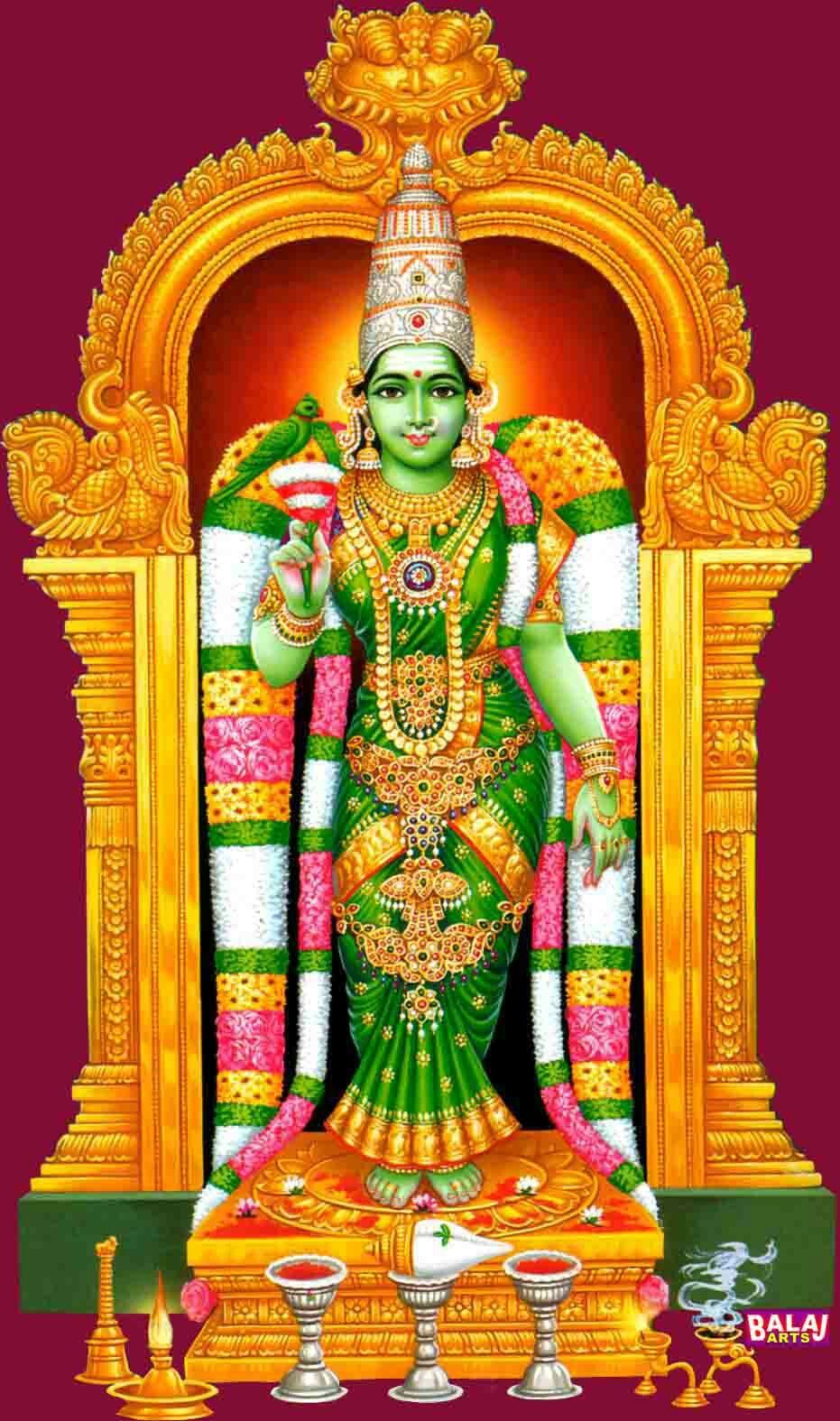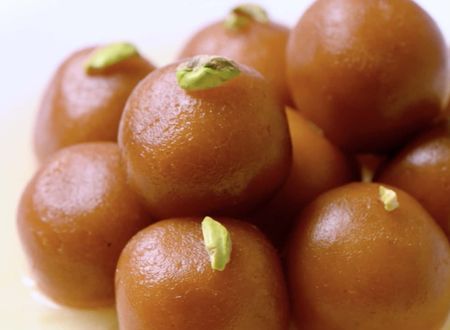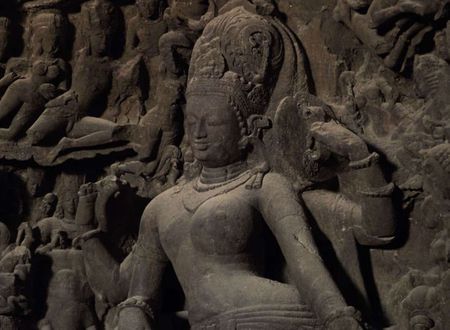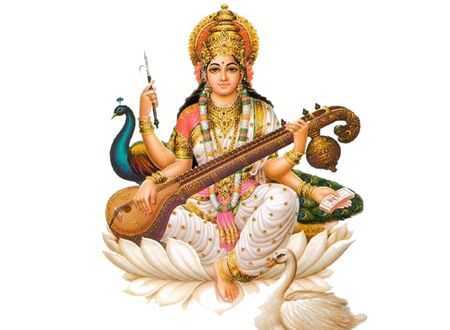The beautiful temple town of Madurai on the banks of the Vaigai river is one of the oldest temple towns of India. This area also used to be called “Kadambavana” as it was covered by kadamba forest. The Meenakshi Amman Temple or the Meenakshi Sundereshwara temple is one of the oldest and most important temples in India. It is believed that Lord Shiva assumed the form of Sundareswara (the handsome one) and married Parvati (Meenakshi) at the site where the temple is currently located.
The story of Devi Meenakshi
King Malayadhwajan and Queen Kanchanamala craved for a child. After several years of marriage, they performed “Putra Kameshti Yagna” And out of the sacred flames emerged a three year old girl. She had 3 breasts. The king and queen knew not what to do, they had hoped for a son. And here was an unusual looking girl child. Just then a heavenly voice spoke, “Do not be anxious about this girl. She is destined to rule as a queen and bring glory to your name. When she meets her future husband, her third breast will disappear.” The girl looked at them with her beautiful fish shaped eyes. Hence she was named “Meenakshi”. The king trained her well, and she had all the skills required to be an able ruler. She extended her kingdom even upto Indralok. Then she went on to capture Kailash, Lord Shiva’s abode. But when Lord Shiva came in front of her, her extra breast disappeared. And she knew that this was He whom she was destined to marry. Lord Shiva told her, “Meenakshi, go back to Madurai. I will come there in eight days, and then we will get married.”
A lavish wedding was arranged by the bride’s family. Lord Shiva assumed his beautiful mesmerizing form for the wedding, and is called Sundereshwara. All the Gods and Goddesses attended the wedding. Lord Vishnu himself solemnized the wedding.
After the wedding, Meenakshi asked Shiva, “We have made such splendid arrangements, and you have brought only one guest, the dwarf Gundodharan !!!” Shiva smiled enigmatically and said, “Let’s see if you can feed him.” All the attendants set out to feed Gundodharan. Soon all the prepared food was exhausted. And Gundodharan was still hungry. Meenakshi understood what Shiva meant. She implored Shiva to do something. He said ,”I will call Annapurna Devi to feed him.” When Gundodharan ate the food served by Annapurna Devi, at last his hunger was satiated.
But now the next problem was that Gundodharan was thirsty! The attendants brought him all the water in the kingdom, yet he was still asking for more. Meenakshi again implored Lord Shiva. Shiva asked Gundodharan to press his hands on the ground and lo behold!! A spring of water gushed forth. At last his thirst was quenched. It is believed that this is how the River Vaigai was formed.
In Madurai, the Chithirai Thiruvizha festival is celebrated every year to mark the coronation and marriage of the Divine couple.
The temple
The history of Meenakshi Temple dates back to the 1st Century C.E. It is said that Kulashekarar Pandyan, a Pandyan king built the temple as per the instructions given in his dream by Lord Shiva. The temple was destroyed by the Muslim invaders in the 13th century. When the Vijayanagar Empire took over Madurai after defeating the Muslim Sultanate, the temple was rebuilt and reopened. The temple was further expanded during the late 16th century and early 17th century by Vishwanatha Nayakar, a king of the Nayaka dynasty. The rulers of Nayaka dynasty followed the architectural style of ‘Silpa Shastras’ which are a set of architectural laws found in the ancient texts. The temple was once again degraded and parts of it were destroyed during the British Rule. In 1959, the restoration work was started and the temple was completely restored in 1995.
The temple occupies a huge area in the heart of Madurai as it spreads over 14 acres. It is enclosed with huge walls, which were built in response to the invasions. The entire structure, when viewed from above, represents a mandala. A mandala is a structure built according to the laws of symmetry and loci.
The temple has two main shrines, which are dedicated to Sundareswarar and Meenakshi.
The goddess shrine has the green stone image of Meenakshi, standing in bent-leg posture. Her raised hand holds a lotus, on which sits a green parrot. Her left hand hangs by her side. This image is set in a square garbha griya (central sanctum). A copy of this image made from metal is kept in the temple complex and is used for festive processions.
The Sundareswarar shrine has a stone linga in its square plan sanctum, shaded under a stone cobra hood. There is another metal symbolic image of Shiva called the Cokkar, which is merely a pair of embossed feet on a metal stool. This symbol is kept near Sundareswarar sanctum all day, then carried in a palaki daily to Meenakshi’s chamber every evening so that the two can symbolically spend the night together. In the morning, the temple volunteers wake the divine couple and the symbolic Cokkar image is carried back to the Sundareswarar sanctum.
The temple has other shrines, such as for Murugan in the northwest corner of the second courtyard. A tall, monolithic Ganesha sculpture with a large rice ball, locally called the Mukuruny Vinayakar, is carved on the way between the Meenakshi shrine and the Sundareshwarar shrine, reflecting the legend that gave him the elephant head. The temple also houses goddesses Lakshmi, Rukmini, and Saraswati.
The temple has a consecrated pond named ‘Porthamarai Kulam’ meaning ‘pond with a golden lotus’. The structure of a golden lotus is placed at the center of the pond.
The temple has fourteen main gateways (Gopurams). The major Gopurams are
Kadaka Gopuram – This towering gateway leads to the main shrine that houses Goddess Meenakshi.
Sundareswarar Shrine Gopuram – This is the oldest ‘gopuram’ of the temple and was built by Kulasekara Pandya. The ‘gopuram’ serves as a gateway to the Sundareswarar (Lord Shiva) shrine.
Chitra Gopuram – the gopuram depicts the religious and secular essence of Hinduism.
Nadukkattu Gopuram – Also called as the ‘Idaikattu Gopuram,’ this gateway leads to the Ganesha shrine. The gateway is placed right in between the two main shrines.
Mottai Gopuram – This ‘gopuram’ has fewer stucco images when compared to the other gateways. Interestingly, ‘Mottai gopuram’ had no roof for nearly three centuries.
The temple also has numerous pillared halls called ‘Mandapams.’ They serve as resting places for pilgrims and devotees. Some of the most important ‘mandapams’ are –
Ayirakkal Mandapam – It literally translates to ‘hall with thousand pillars.’ The hall, which was built by Ariyanatha Mudaliar, is a true spectacle as it is supported by 985 pillars. Each and every pillar is sculpted magnificently and has images of Yali, a mythological creature.
Kilikoondu Mandapam – This ‘mandapam’ was originally built to house hundreds of parrots. The parrots that were kept there in cages were trained to say ‘Meenakshi’. The hall, which is next to the Meenakshi shrine, has sculptures of characters from Mahabharata.
Ashta Shakthi Mandapam – This hall houses the sculptures of eight goddesses.
Nayaka Mandapam – ‘Nayaka Mandapam’ was built by Chinnappa Nayakkar. The hall is supported by 100 pillars and houses a Nataraja statue.
Hope you enjoyed reading this post. May Shiva and Shakti shower their blessings on you!! 🙏🙏









Comments & Discussion
8 COMMENTS
Please login to read members' comments and participate in the discussion.